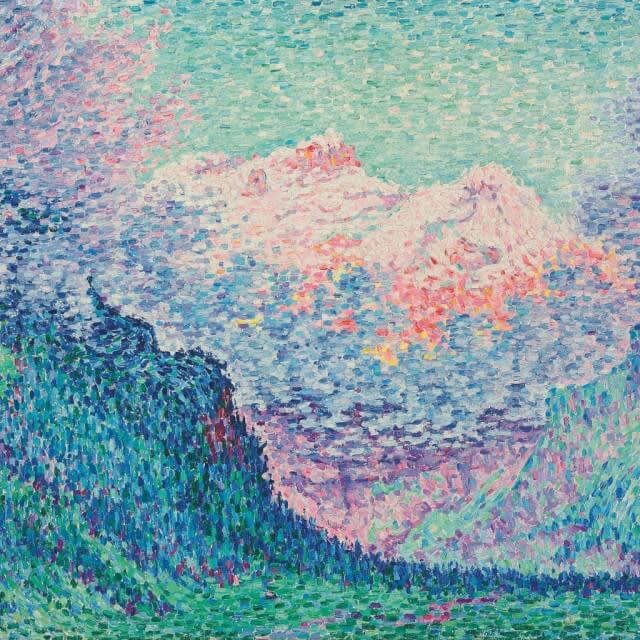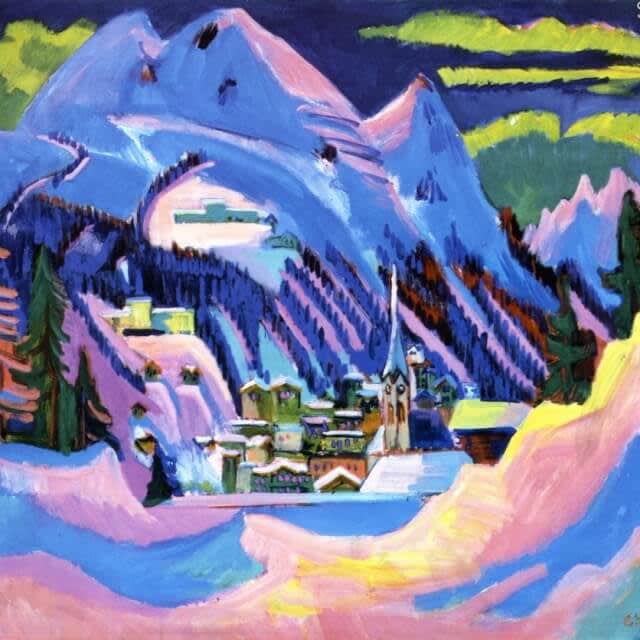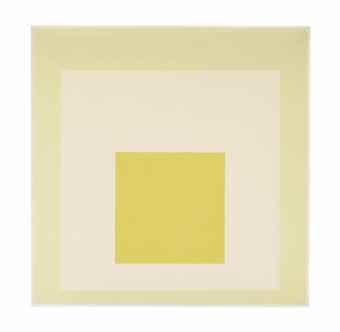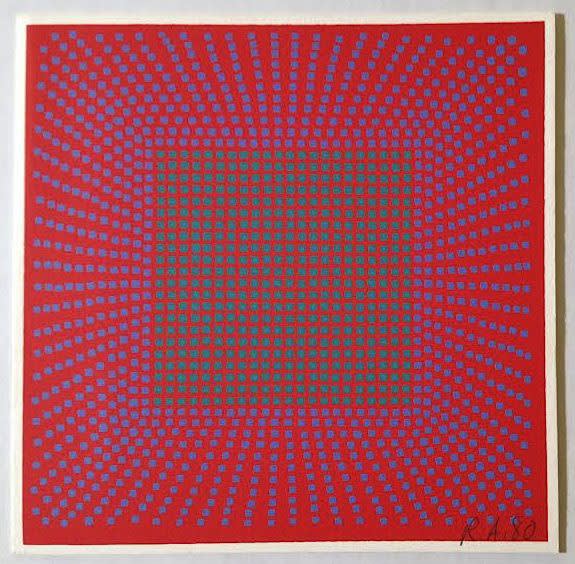Europeans have been collecting Op Art since the mid-20th century, after the Le Mouvement exhibit in Paris in 1955, which introduced the public to Optical and Kinetic artists like Victor Vasarely, Jean Arp and Alexander Calder.
A decade later, in New York, MoMA hosted an exhibition called The Responsive Eye, which included the greatest European Optical Artists and their American counterparts. Works by Victor Vasarely, Yvaral and Bridget Riley were hung alongside the works of Frank Stella, Josef Albers and Richard Anuszkiewicz.
The art and science of Op Art goes back to the 19th century, when French scientist, Eugene Chevreul, and others, were studying the effects of color on visual perception in art and science.
Some of the greatest artists of the time, like Georges Seurat, Paul Signac, Charles Angrand visited Chevreul and used his principles to create their paintings.
Chevruel’s influence on the art world began when he became the director of the Gobelins Manufactory company in Paris. The company dyed yarns for tapestries and carpets. When the company’s weavers complained about the black color of some of the wool, Chevruel’s testing led him to the realization that the dyes were not the problem. He began to understand that the visual perception of color was influenced by how the colors were placed alongside one another.
Here’s how Chevruel explained his Law of Simultaneous Contrast :
If we look simultaneously upon two stripes of different tones of the same colours, or upon two stripes of the same tone of different colours placed side by side, if the stripes are not too wide, the eye perceives certain modifications which in the first place influence the intensity of colour, and in the second, the optical composition of the two juxtaposed colours respectively. Now as these modifications make the stripes appear different from what they really are, I give to them the name of simultaneous contrast of colours; and I call contrast of tone the modification in intensity of colour, and contrast of colour that which affects the optical composition of each juxtaposed colour.”
—Eugene Chevreul
As the work of the Impressionists evolved, the use of color evolved, as well, and artists began to use color, shape and style in ways never seen before, in a more abstract and emotional way.
The Bauhaus, in Germany, had a great influence on the art of the early 20th century, but was closed by the Nazis in 1933. Great artists and teachers, like Josef Albers, emigrated from Germany to the United States. Albers taught at Yale, and passed his interest in color interactions on to his students. He published Interaction of Color in 1963 and used the principles he taught in his own works.
One of Albers’ most successful students was Richard Anuszkiewicz, who has spent his life exploring the visual effects of color in his work.
Chinese artist, Wayne Guangle, is one of the few young painters today who is focused on the visual possibilities of Op Art, which makes artists like Vasarely, Yvaral and Anuszkiewicz very collectable.
Please contact us if you have any questions about the work of Richard Anuszkiewicz or the other Op Artists in our gallery.















